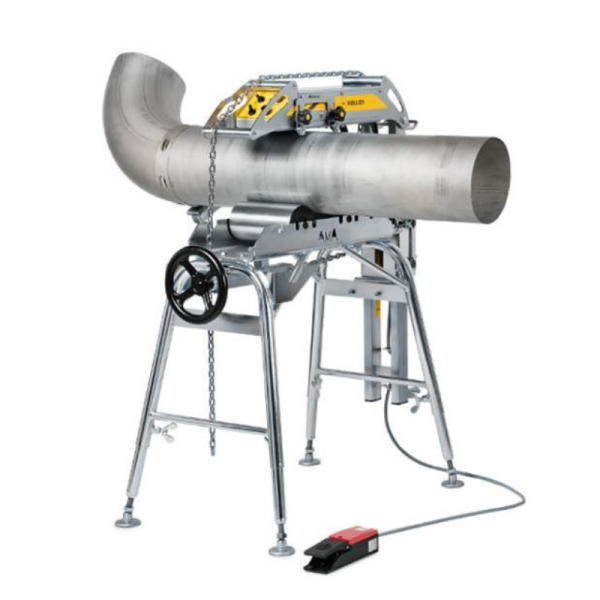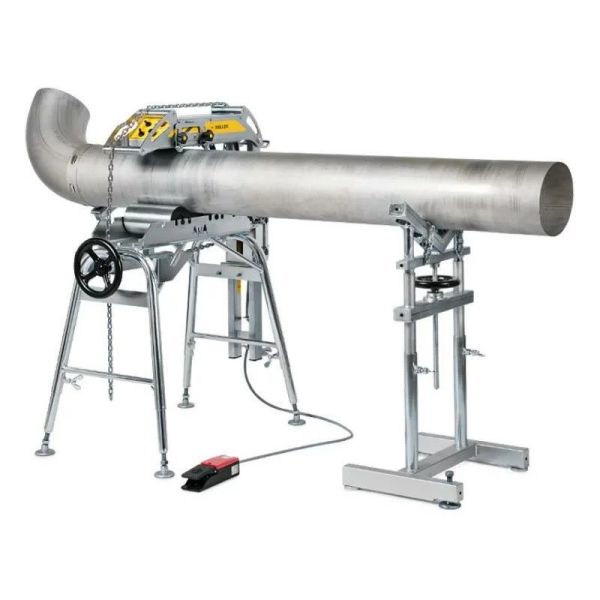Welding Rotators and Turning Rolls
Welcome to our comprehensive guide on welding rotators – the indispensable equipment designed to elevate the efficiency and precision of welding projects to unprecedented heights. Whether you are a seasoned welder or just starting your journey in the welding world, this cutting-edge technology will undoubtedly become your go-to tool for accomplishing flawless welds effortlessly. In this article, we will delve into the multitude of benefits offered by welding rotators, answer frequently asked questions, and shed light on how they can optimize your welding processes.
Understanding Welding Rotators
1.1 What are Welding Rotators?
Welding rotators, also known as tank turning rolls or pipe rotators, are mechanical devices designed to rotate cylindrical workpieces during welding, fabrication, and assembly processes. These robust machines are used primarily in welding operations for large-scale projects, such as pressure vessels, storage tanks, pipelines, and other cylindrical components.
1.2 How Do Welding Rotators Work?
Welding rotators consist of a set of rollers or wheels mounted on adjustable arms that cradle and rotate the workpiece. The rollers facilitate smooth rotation while the welding process takes place. Some welding rotators are powered by motors for automated rotation, while others may require manual operation, depending on the model and application.
Advantages of Using Welding Rotators
2.1 Enhanced Efficiency
One of the most significant advantages of using welding rotators is the significant boost in efficiency they provide. By automating the rotation process, welders can focus solely on the welding itself, eliminating the need for constant manual repositioning of the workpiece. As a result, welding rotators enable faster welding times and increased productivity.
2.2 Consistent Weld Quality
Maintaining a consistent distance and angle while welding is crucial for achieving high-quality welds. Welding rotators ensure uniform rotation, which, in turn, leads to even heat distribution, reduced distortion, and minimized welding defects. This results in welds with superior structural integrity and aesthetic appeal.
2.3 Improved Welder Safety
Welding rotators reduce the physical strain on welders by eliminating the need to handle heavy workpieces manually. With the rotation process mechanized, the risk of musculoskeletal injuries is significantly diminished, promoting a safer working environment.
2.4 Versatility and Adaptability
Welding rotators come in various sizes and weight capacities, making them suitable for a wide range of welding applications. Whether you are working on small pipes or massive pressure vessels, there's a welding rotator to meet your specific needs. Moreover, some models are designed to handle both horizontal and vertical welding tasks, adding to their versatility.
2.5 Time and Cost Savings
The increased productivity and consistent weld quality achieved with welding rotators lead to substantial time and cost savings. Welding rotators accelerate project completion, reducing labor hours, and optimizing resource utilization. This cost-effectiveness makes welding rotators a wise long-term investment for welding workshops of all sizes.
2.6 Precise Positioning and Alignment
Accurate alignment and positioning are crucial for welding cylindrical workpieces effectively. Welding rotators provide precise and controlled rotation, ensuring that welders can access all areas of the workpiece easily. This enhanced access results in higher-quality welds and reduces the need for rework or touch-ups.
Types of Welding Rotators
3.1 Conventional Welding Rotators
Conventional welding rotators are the most common type and consist of two or more motorized rollers connected to a controller. They are suitable for a wide range of cylindrical workpieces and can be easily adjusted to accommodate various diameters.
3.2 Self-Aligning Welding Rotators
Self-aligning welding rotators feature automatically adjustable rollers that can adapt to the diameter of the workpiece without manual intervention. This feature is particularly advantageous when dealing with pipes or vessels of varying sizes during a project.
3.3 Fit-Up Welding Rotators
Fit-up welding rotators are specially designed to assist in the precise alignment of two cylindrical workpieces for welding. They ensure perfect fit-up during tack welding and provide stable support throughout the welding process.
Selecting the Right Welding Rotator for Your Project
4.1 Weight Capacity and Size
The first consideration when choosing a welding rotator is its weight capacity, as it should be able to support the maximum weight of the workpiece. Additionally, ensure that the rotator's size is suitable for the intended application, accounting for both the minimum and maximum diameters of the workpieces you typically handle.
4.2 Rotation Speed and Torque
The rotation speed and torque of the welding rotator determine how fast and stable the workpiece rotates. Depending on the welding requirements, choose a rotator with adjustable rotation speeds and sufficient torque to handle the workload efficiently.
4.3 Power Source
Welding rotators can be powered by electricity or hydraulic systems. Electric rotators are more common and suitable for most applications, while hydraulic ones are ideal for heavy-duty projects that demand greater power and control.
4.4 Mobility and Maneuverability
Consider the mobility and maneuverability of the welding rotator. Some models feature wheels for easy transportation, while others may require a stationary setup. Choose the option that best suits your workspace and project requirements.
Frequently Asked Questions about Welding Rotators
5.1 What is the purpose of a welding rotator?
The primary purpose of a welding rotator is to facilitate the rotation of cylindrical workpieces during welding, fabrication, and assembly processes. By automating this rotation, welding rotators enhance efficiency, weld quality, and welder safety, ultimately improving the overall welding process.
5.2 Can welding rotators handle different diameters of workpieces?
Yes, welding rotators are designed to accommodate various diameters of workpieces. Some models have manually adjustable rollers, while others feature self-aligning capabilities to adapt to different sizes automatically.
5.3 Are welding rotators easy to operate?
Yes, welding rotators are relatively straightforward to operate. Most models come with user-friendly controls and intuitive interfaces, making them accessible to welders of all skill levels. However, proper training and familiarization with the specific model are essential for optimal results and safety.
5.4 Can welding rotators be used for vertical welding tasks?
Yes, some welding rotators are versatile enough to handle both horizontal and vertical welding tasks. These models are equipped with specialized fixtures and adjustments to ensure stable positioning during vertical welding.
5.5 How do welding rotators improve weld quality?
Welding rotators contribute to improved weld quality by ensuring uniform rotation of the workpiece, which leads to even heat distribution and reduced welding defects. Consistent rotation also aids in precise alignment, allowing welders to access all areas of the workpiece easily.
In conclusion, welding rotators are transformative tools that elevate welding projects to new heights of efficiency, precision, and safety. By automating the rotation process, welders can focus on perfecting their welding techniques while achieving consistent and high-quality results. Whether you are working on large-scale pressure vessels or small pipes, welding rotators are versatile, cost-effective, and indispensable companions for welders across various industries. Embrace the power of welding rotators and witness your welding processes reach new levels of excellence!



